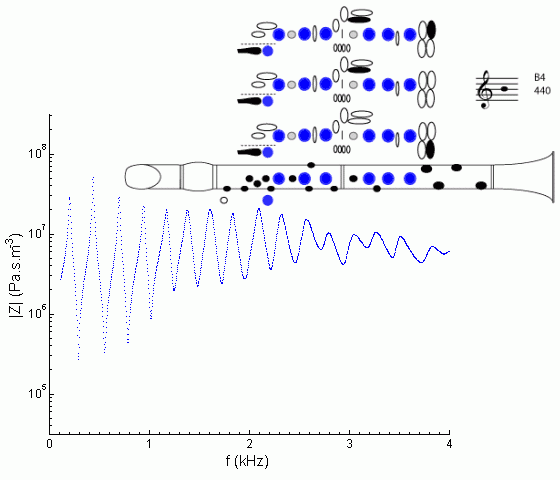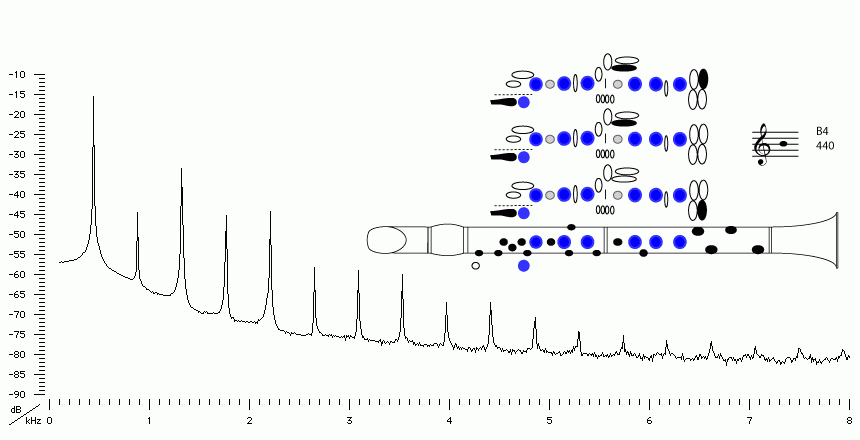| Acoustics of the clarinet |
Bb clarinet |
B4 |

|
Fingering Acoustic schematic Non-specialist introduction
to acoustic impedance Notes are the written pitch. |
Note how similar this spectrum is to that for E3. (Of course, the clarinet overblows a 12th.) The only substantial difference is the reduction in amplitude (and displacement in frequency) of the first peak. The purpose of the speaker key is just that: to weaken the fundamental resonance (and to remove it from harmonic alignment with the higher resonances) so that the instrument will not 'drop down' to the lower register. See register hole for details.
This is the first note in the clarino register, ie the first note above the break. The break is not only awkward for the fingers (you have to move 8 fingers, a thumb and a knuckle at once) but it creates another problem facing every clarinettist. In the first register (compare eg with A#4), the first and third harmonics are strong, and the second is weak. This preponderance of odd harmonics gives the clarinet in its low range the characteristic 'hollow' sound. As one ascends in the clarino register and above, however, the even harmonics begin to lose their systematic weakness. Consequently the sound is brighter, fuller and, unless one is careful, louder. Playing a passage across the break, one tries to hide this difference in timbre and loudness.
The spectra of most of the notes in the clarino register have both odd and even harmonics and the associated bright, full tone (listen to sound file below), rather than just the odd harmonics and 'hollow' sound of the chalumeau register. In the chalumeau register (see eg E3), there are impedance peaks near the third, fifth and seventh harmonics, whereas there are 'valleys' corresponding to the second, fourth and sixth. Beyond that, the peaks are no longer in accurate, harmonic ratios and the effect disappears. For the low notes in the chalumeau register, this high frequency inharmonicity is due to the bell (see frequency response), for higher notes it is due to the effects of open tone holes (see cut-off frequencies).
In the clarino register, even the third and fifth harmonics of the note played (which would be the ninth and fifteenth harmonics of the corresponding note in the chalumeau register) are up in the frequency ratio where the bore is inharmonic, because of the bell and tone hole effects.

Sound spectrum
of a Bb clarinet
played using fingering for B4.
For more explanation, see
Introduction to clarinet acoustics
|
Contact:
Joe Wolfe
/ J.Wolfe@unsw.edu.au |